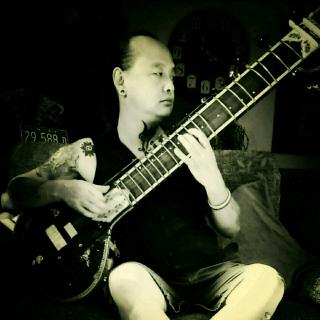
介绍:
《Sitar's History and Development》
Performer: 昊翰Haohan
Editor: Judy Padma
西塔琴Sitar的源流众说纷纭,一般印象是从南印度的维纳琴改良,但据考据应该是改自波斯的Sehtar琴。 西塔琴可以说是印度最具代表性的印度古典乐器,印度西塔琴大师 Ravi Shaker(拉威香卡)无疑的是印度西塔琴推上西方听众,甚至于全世界最重要的功臣。西塔琴是北印度最重要发弦乐器。至于是何时被改成今天我们看到的西塔琴原形,精确的日期已无可考,传说14世纪已有西塔琴的出现,但在1700年,莫卧儿王朝末期,西塔琴已开始逐渐广为流传,是毫无疑问的。西塔琴在全世界闻名得益于摇滚乐的发展。
基本信息
中文名:西塔琴
外文名:Sitar
其他名称:锡塔尔琴
发明国家:印度
发明日期:14世纪
系属:拨弦乐器
The source of the sitar of sitar is widely mixed, with the general impression that the vina is improved from the south India, but it should be changed from the sehtar. The sita is the most representative Indian classical instrument in India, and the Indian sitaever master Ravi Shakerer(raviki) is undoubtedly the most important player in the west, even the world's most important. The source of the sitarqin is widely mixed, with the general impression that the vina was improved from the south India, but it should be changed from the Persian setarqin. Sita is the most important string instrument in north India. As to when it was changed to today's sita, the exact date has no way of examination, and the 14th century has been the emergence of the sita, but in the end of 1700, the sita had begun to spread, and there was no doubt about it. Sitqin is known all over the world for the development of rock music.
Basic information
Chinese name: sita
Foreign name: sitar
Other names: sitar
Invention: India
Date of invention: the 14th century
Type: Plucked String Instrument
大家还在听

